
Video: Garden Success with Good Watering Practices
Success in the garden can occur with proper watering. Learn several ways to water to your vegetables In the Home Garden with UF IFAS Extension Escambia County.

Success in the garden can occur with proper watering. Learn several ways to water to your vegetables In the Home Garden with UF IFAS Extension Escambia County.
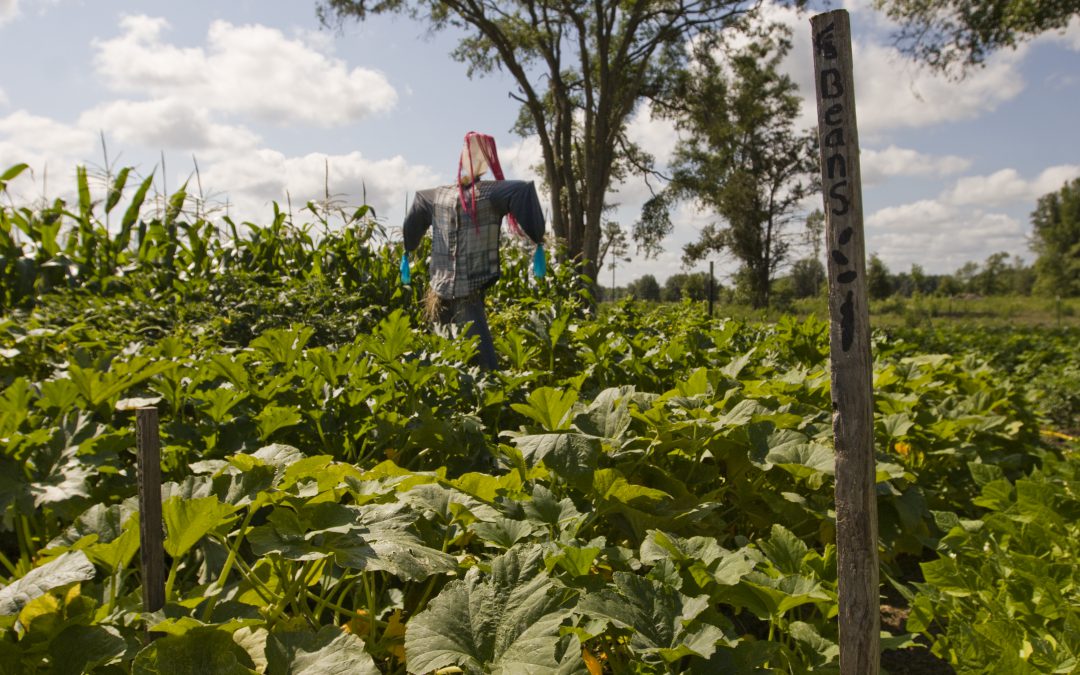
Bush beans are an easy and enjoyable plant to grow in the home garden. These particular beans do not require a trellis and will be ready to start harvesting in about 50 days. Learn more about growing your own bush beans with UF IFAS Escambia County Extension In the Home Garden.

Florida is home to some amazing and gorgeous plants that are underused and underappreciated in the home landscape. One such plant is an evergreen and easy-care large shrub or small tree known as black titi or buckwheat tree, botanically known as Cliftonia monophylla.
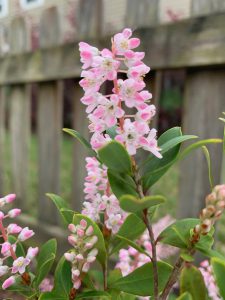
Pink-flowered variety of black titi, Cliftonia monophylla. Photo credit: Mary Salinas, UF/IFAS Extension.
Black titi is commonly found in wet areas and at the edges of swamps in USDA hardiness zones 7B through 9A from Louisiana through the Florida panhandle and into South Carolina. This is a perfect plant for those areas of your landscape that are low and consistently moist.
Early spring brings clusters of small white flowers at the tips of the branches. Occasionally one can find the pink-flowered variety of black titi in the native nursery trade. These fragrant flowers provide an early season nectar source for bees in February and March. The flowers give way to golden-amber seed pods that resemble buckwheat. The seed pods turn a pleasing orange-brown and persist on the plant through winter. The shiny dark green evergreen leaves along with the seed pods provide an additional ornamental quality to the tree in fall and early winter.
For more information:
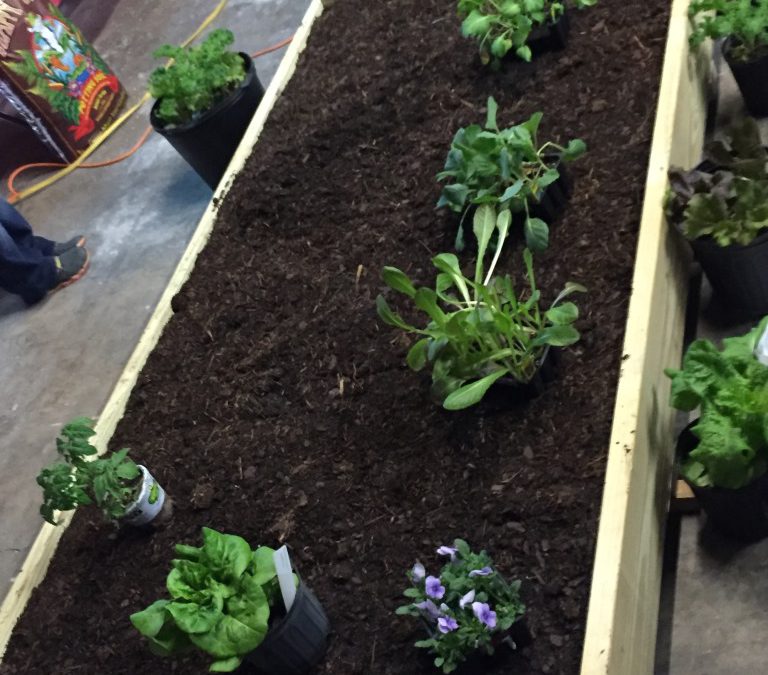
Interested in growing vegetable crops but have limited space for a garden bed? Maybe you live in an apartment, have poor soil, or you can’t find a sunny enough location to start an in-ground garden.
The good news is you can grow nearly any crop in a container! Even crops such as beans, squash, watermelon, and sweet potatoes can be grown to maturity and produce high yields if they are grown in properly sized containers with nutritious potting soil.
The Container Gardening: Recommended Varieties and Spacing chart covers the recommended minimum container volume, container depth, plant spacing, and varieties that do well in containers for each crop:
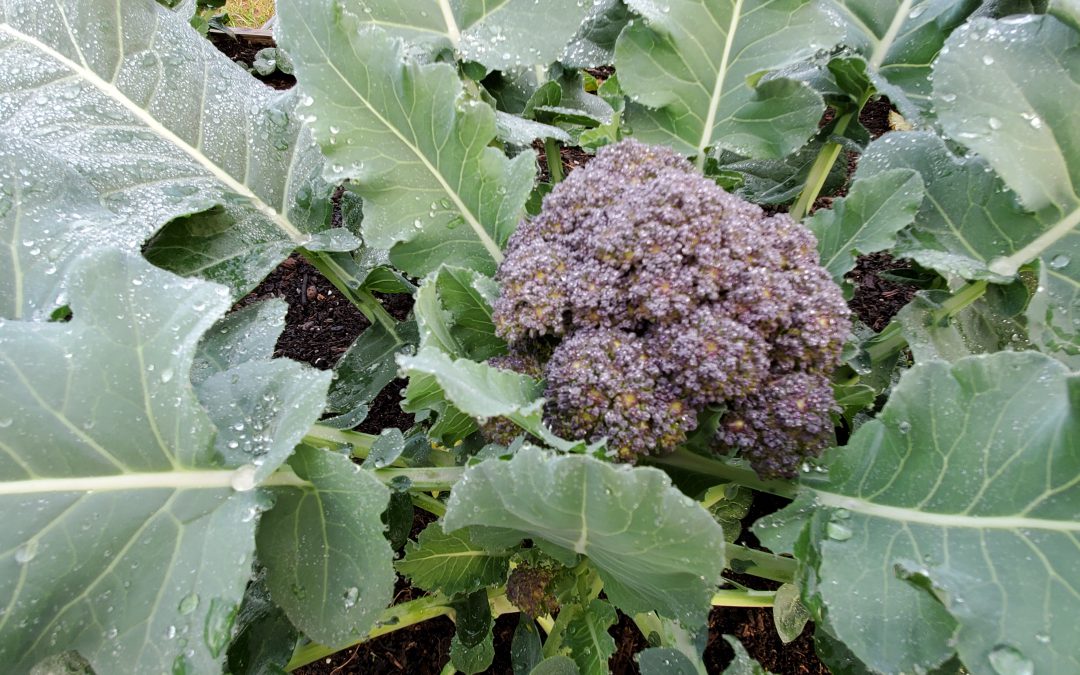
Cruciferous vegetables, mostly cool-season annuals in the Brassicaceae (formerly Cruciferae) family, are part of a healthy diet, prized for their high fiber content and unique sulfur-containing compounds known as glucosinolates. This vegetable family includes things many of us love (or love to hate) like Brussels sprouts, cabbage, cauliflower, collards, kale, mustard, turnips, bok choy, and Chinese cabbage. They’re also commonly grown in Panhandle gardens. However, as anyone who has grown these species knows, some are easier than others. For example, kale and radish are among the easiest of all plants to grow. But get beyond the basics and folks often run into difficulty with species like broccoli and cabbage. The high rainfall/humidity and frequent warm spells experienced here during the growing season often lead to serious pathogen problems, dooming my garden in years past. However, this winter, thanks to a couple of new cultivars, ‘Capture’ Cabbage and ‘Burgundy’ Sprouting Broccoli, I’ve enjoyed a plentiful supply of tasty crucifers!
‘Capture’ Cabbage, developed by Bejo Seeds of California as a mid-season “white” fresh market cabbage for the South, has been an outstanding performer in my garden this year. Touted as highly resistant to Black Rot and Fusarium Yellows (by far the two most devastating pathogens of Cabbage), I had to try it for myself. I planted seeds 24” apart in my standard 4’ wide x 8’ long x 12” deep raised beds filled with mushroom compost and aged pine bark. Seedlings were fertilized once about three weeks after germination with a general purpose 10-10-10 fertilizer. The plants that developed have been extremely vigorous (I’m glad I paid attention to plant spacing guidelines on the seed packet!) and have not shown ANY evidence of disease, even through an unusually warm and wet winter that would have hammered older susceptible varieties. My plants have begun to develop heads and should be ready for harvest and the kitchen in just a couple more weeks! If you’ve had problems getting a cabbage from germination to head formation and harvest without serious disease pressure, give ‘Capture’ a try next fall!
‘Burgundy’ Broccoli, developed by Elsom Seeds in the United Kingdom, is a unique variety sure to turn heads in your garden. True to its name, the prolific florets are a deep, purple color. Though the central “head” on ‘Burgundy’ is quite small, that’s not the primary feature anyway. Considered a “sprouting” broccoli, this cultivar puts out an abundance of side shoots that make ‘Burgundy’ sort of a cut-and-come-again broccoli, allowing for a long harvest window. Another advantage from a disease avoidance perspective is the short maturity time (the time from planting seeds to having harvestable shoots) of around 40 days! For perspective, a “regular” heading broccoli has a maturity of around 60 day, lots more time for problems to happen. In the same growing conditions described above for cabbage, ‘Burgundy’ performed amazingly well for me, growing strong, healthy stalks, large, unblemished leaves and an abundance of purple shoots with a nice flavor profile!
If you want to enjoy homegrown broccoli and cabbage but disease pressures have made your previous efforts unproductive, give ‘Capture’ Cabbage and ‘Burgundy’ Broccoli a try! These two selections have made it easier than ever to enjoy unique, homegrown, healthy cruciferous veggies. Keep these and other quality, disease-resistant cultivars in mind when planning your winter garden in 2020!

 No previous experience or accreditation it required to be a landscaper in the state of Florida. So when homeowners are searching for service providers, it is important that they question potential companies about their skills. One good measure is completion of voluntary certifications such as the Florida Nursery, Growers and Landscape Association (FNGLA) Certified Horticulture Professional (FCHP). The FCHP program has been the industry’s standard for measuring horticulture and landscape knowledge since 1984. The training is also useful for property managers, homeowner associations and retail garden center employees, or anyone that wants to know more about Florida’s plants and their care.
No previous experience or accreditation it required to be a landscaper in the state of Florida. So when homeowners are searching for service providers, it is important that they question potential companies about their skills. One good measure is completion of voluntary certifications such as the Florida Nursery, Growers and Landscape Association (FNGLA) Certified Horticulture Professional (FCHP). The FCHP program has been the industry’s standard for measuring horticulture and landscape knowledge since 1984. The training is also useful for property managers, homeowner associations and retail garden center employees, or anyone that wants to know more about Florida’s plants and their care.
Plants are complex and variable living things that range from microscopic to the largest of living organisms. With steady population growth in the state of Florida, environmental damage risks created by the use of improper products and practices has continually risen. State and federal natural resource protection agencies have restricted certain horticultural practices, as well as, fertilizer and pesticide application. It takes scientific knowledge to maintain lawns and landscapes, not just a “green thumb” in order to keep plants healthy while reducing contamination to the soil, air and water that we all need.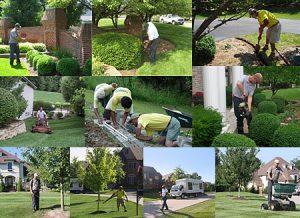
The Florida Certified Horticulture Professional training covers 16 areas, including identification, fertilization, irrigation, pest management, safety and business practices. Lecture and hands-on activities are utilized at each session. The 70-hour course will enhance anyone’s knowledge and will provide the basis for professionals to deliver a skilled service to clientele.
If you are a green industry worker or a concerned citizen interested in attending a FCHP preparatory course, there is an opportunity here in Crestview. Beginning Thursday, January 16, 2020 and continuing for 10 weeks to March 19, 2020, the Okaloosa County Extension office will be providing training for $175, which included the newest hard copy manual. Contact Sheila Dunning, 850-689-5850, sdunning@ufl.edu for more information.